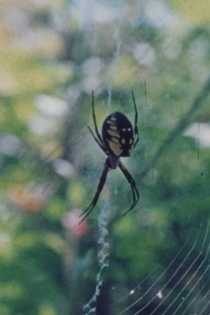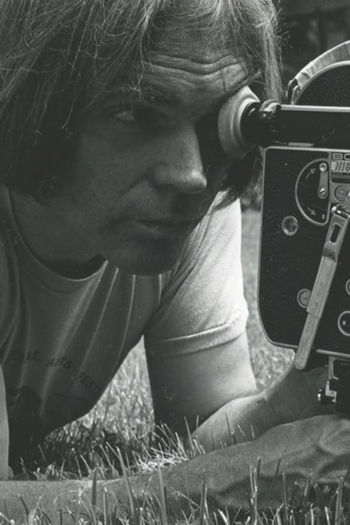
Abbott Meader
2021The Elms
Abbott Meader
"THE ELMS was my first sound film, in 1964, made after the assassination of JFK. I hoped that the title might bring to mind the American Elm tree, which was seen to be doomed by way of disease. The assassination of Kennedy in 1963 was a tremendously emotional blow and omen of things to come. The whole country watched the funeral ceremonies play out on TV, and I taped everything I could of those events – music, words, prayers, the killing of Lee Harvey Oswald , and more. I needed to make a film that would incorporate some of those sounds, but I also wanted to introduce other components. Some people assumed I was making an homage to JFK. That is not the case. I think it should be clear that what I was concerned about was the evolving state of our nation." –Abbott Meader
The Elms
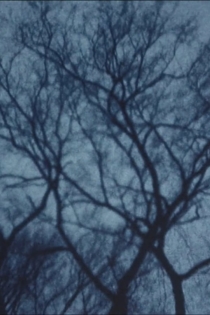
Isolation
Abbott Meader
"I feel that some of the silent pieces might be seen as visual music. Perhaps a bit pretentious to say that, but such pieces as ISOLATION are something of the sort. This is a film that every time I see it I want to re-edit it, just for fun. Its like a jazz improv, and could be different during the next set – the rhythms, the pauses, perhaps with longer passages and variations in visual tonality, theme and variation, recapitulations – all sorts of musical terms might be applied. There is no real narrative development here. The film suggests that a boy in a rowboat sees glimpses of the world around him. The boy whose image you see is our son, Darmon, and long ago I was a similar boy as well." –Abbott Meader
Isolation

Catwalk
Abbott Meader
"The film stars Bone, originally named Basil Catbone, a creature who survived several life threatening events to die at the age of 17. He was one of my mentors and a cherished friend. When this film was shown in Europe many years ago, someone called him the 'Charles Bronson of cats'. Dogs feared him, but with humans he was gentle. [...] A little girl awaits a school bus. A spider awaits its prey. Through it all, Bone, a feline Zen master, walks stolidly ahead, implying, perhaps, that there might be a means to resolve this, and we see him choose to balance himself and move on down the line, walking the path of the middle way." –Abbott Meader
Catwalk
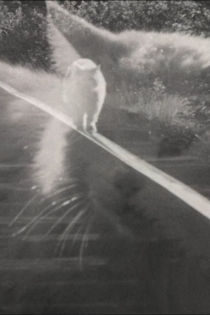
Winter Fence
Abbott Meader
"A fence to contend with winter storms. Auld Lang Syne. Memories of green. 'Benigne fac, Domine, in bona voluntate'. The organ at Fenway park on Yaz' last day. Saturn, bringer of old age, and a meditation on that long, unrelenting road and enduring the weight of the journey." —Abbott Meader
Winter Fence
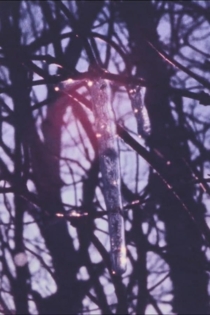
A Looking for Summer
Abbott Meader
"Thematically, it echoes the nature of the first film, but is ultimately quite different and more tightly constructed. I try to select some perhaps archetypal situations and things and present them as part of, and/or in relationship to physical interiors and exteriors and to abstract images in such a way that they all merge into complex 'inscape' that treats on man's bonding to his environment — with the very nature of the formal structure lifting the whole business out of time. The key to locking up the whole shebang comes individually to the viewer when he contemplates his own idea of Summer. If the film reminded people of, among other things, man's power to live both past and future in a moment, I'd feel that that was a great deal of what it was about." -A. M.
A Looking for Summer

In the Mountains
Abbott Meader
"This is the fifth and final section of the 1977 film WEST BY NORTH. I feel it can stand by itself as a complete, if enigmatic statement. A casual browser is therefore afforded a look at a component of WXN, and may become interested in viewing the complete 25 minute film [...] The title is the conclusion of a dreamed phrase: "Flying low, out of creation, they met some rough spots in the mountains" -Abbott Meader
In the Mountains

West By North
Abbott Meader
"The direction of Western Culture's advance has been WXN, and now no further planetary geography remains into which to penetrate. Today there is talk of heading to Mars - a benighted concept. The geography that remains lies within, but our extroverted society seems largely determined not to explore it. So in a dream I heard the words, 'Flying low, out of creation, they met some rough spots in the mountains.' The film, in five short sections, explores and expands upon this statement. Beyond that, I would need to write pages. Better to just say, 'Take a look.'" —Abbott Meader
West By North
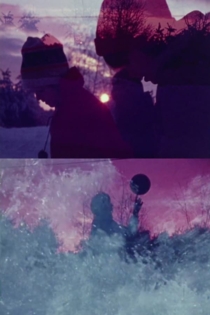
For Life, Against the War
Betty Ferguson, Peggy Lawson
First shown on January 30, 1967, FOR LIFE AGAINST THE WAR was an open-call, collective statement from American independent filmmakers disparate in style and sensibility but united by their opposition to the Vietnam War. Part of the protest festival Week of the Angry Arts, the epic compilation film incorporated minute-long segments which were sent from many corners of the country, spliced together and projected. The original presentation of the works was more of an open forum with no curation or selection, and in 2000 Anthology Film Archives preserved a print featuring around 40 films from over 60 submissions.
For Life, Against the War
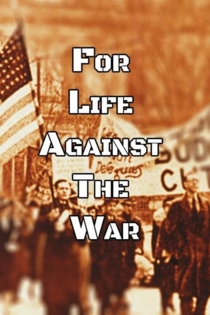
Summerfall Black Berries
Abbott Meader
"A silent, in-camera improv that contemplates the early autumn colors and forms of some weathered, wild blackberries growing along a rural Maine railroad track. The berries themselves are gone - into many mouths or fallen to earth. Winter, as yet unseen, approaches from afar. The superimpositions were done in the camera and there was no further editing of the film." —Abbott Meader
Summerfall Black Berries
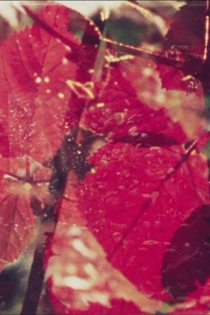
American Odyssey
Abbott Meader, Bruce Williams
American Odyssey is a look at Orff-Schulwerk in America in 1979. Filmed in 17 schools in 7 states, it documents the creative process in music, movement, dance, theater, and the spoken word, involving students and teachers from kindergarten through community chorus and orchestra. Running throughout are the poem "Sky Dwellers" by Marcia Lunz and the poetic camerawork of Abbott Meader.
American Odyssey

Shadows from the Western Wall
Abbott Meader
"SHADOWS FROM THE WESTERN WALL involves footage from Rome, the Eternal City, and from the woodlands of rural Maine. There is a bit of spoken English. A voice says, 'Just a man' A second voice says 'An ancient race. Only at the point of dying'. And the first voice replies 'I know'. The film reflects my vision of the Western Empire at the time. I also thought of Shelley’s 'Ozymandias'. The sculptured heads seen in the film are mostly anonymous relics from the past – powerful images that arise from the historical graveyard and live on to teach us some important lessons. Shadows FROM, not ON, the Western Wall. [...] Much of the imagery in Rome is qualified by insertions of Maine’s water, trees, and sky – realities that came before and will remain in some form after the 'Eternal City' is long gone." –Abbott Meader
Shadows from the Western Wall
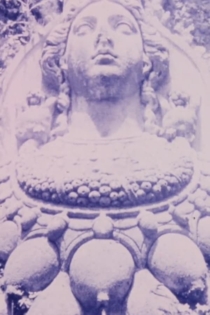
Racetrack
Abbott Meader
"This dates from 1972 and 73. Frustration and anger in the nation and the world. Nothing new about that. The eternal return, and yet a reality unknown to a child. I have featured children in many of my films and the 'Loss of Innocence' theme is often present or implied. The film involves sound that goes both forward and backward, images of American football violence, a lot of scraps going around and around to nowhere. There is also a child, (our daughter Rebekah) and a tricycle. Each viewer will have a unique response. Eye of the beholder." –Abbott Meader
Racetrack

